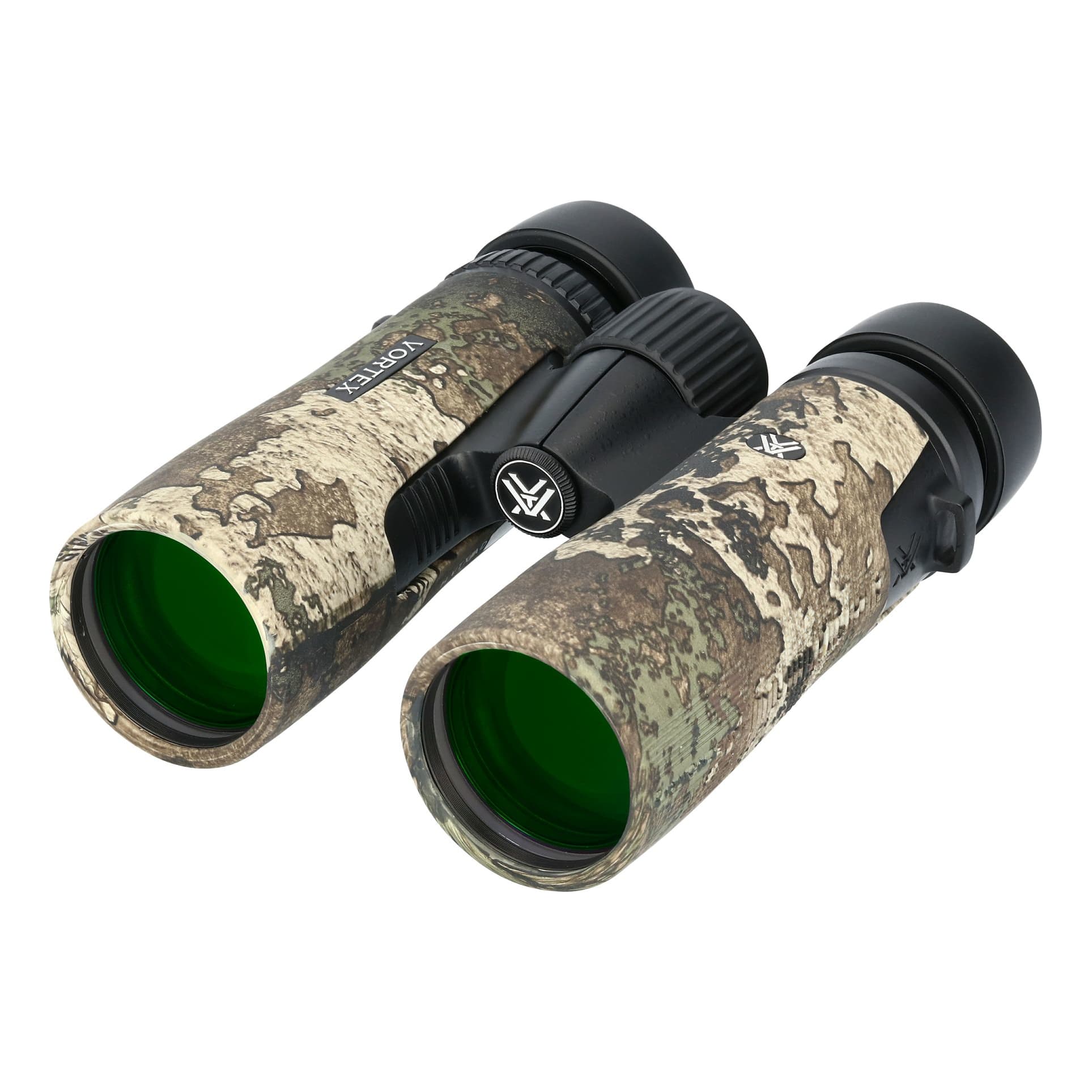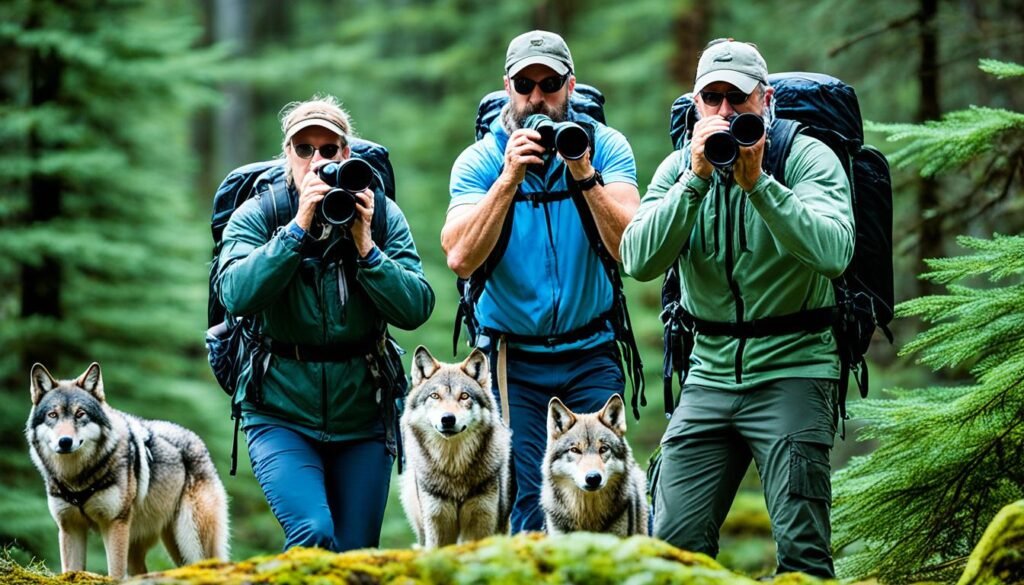Ever wondered where to see wolves in the wild, especially in a country known for stunning nature?
Canada’s vast lands are perfect for spotting wolves.
They have different habitats that make each place special for wildlife watching.
As you travel through this amazing country, you’ll see beautiful views and maybe even the majestic grey wolf in the wild.
This guide shows you the best places to see wolves, each offering unique chances for nature lovers and wildlife fans.
Key Takeaways about Wolf Viewing Spots
- Canada is home to the world’s largest grey wolf population.
- Wood Buffalo National Park features a distinct ecosystem that supports diverse wildlife.
- Banff and Jasper National Parks provide excellent habitats for wolf spotting.
- Parc Oméga offers unique accommodations for up-close wolf encounters.
- Winter is often the best time for active wolf viewing.
- Understanding wolf behaviour enhances the likelihood of sightings.
- Responsible wildlife watching is crucial to preserving wolf habitats.
Introduction to Wolf Spotting in Canada
Canada is known for its vast wilderness, making it a top spot for wolf sighting hotspots in North America. Seeing a wolf in the wild is an experience that leaves a lasting impression. It offers a chance to connect with nature’s beauty, including the haunting sounds of wolf howls.
The country’s varied landscapes are home to many ideal wolf viewing locations. Places like Riding Mountain National Park in Manitoba and Jasper National Park are perfect for spotting wolves. These spots let visitors see these animals up close and learn about their importance in nature.
People often look for the top spots for wolf watching to dive into nature. They share stories of their wolf encounters, sparking interest in conservation. At these places, visitors join a conversation about protecting these amazing animals and their homes.
Affiliate Disclaimer: We may earn a commission from purchases made through the links on this page.
Understanding Wolf Behaviour and Habitat
Learning about wolf behaviour and their home is key for those wanting to see them in the wild. By watching these amazing animals in their natural setting, we learn a lot. This helps us appreciate wildlife more.
The Importance of Natural Ecosystems
Natural habitats are crucial for wolves to live well. They have lots of plants and animals, which wolves need for food. This balance affects how wolves behave, as they need lots of food and a safe place to live.
Places with lots of different plants and animals are best for seeing wolves. They are often found in untouched nature and wildlife areas.
Pack Dynamics and Social Structure
Wolves live in groups called packs, which are key to their survival. Knowing about these groups helps us understand their actions. A pack usually has a breeding pair and their kids, making strong family ties.
They talk to each other with sounds like howls and growls. Watching these moments can make our experience better. It also shows why we should keep a safe distance from them.
| Factor | Description |
|---|---|
| Pack Size | Typically varies from 2 to 15 wolves depending on the habitat and food availability. |
| Communication | Includes howls, growls, and barks to establish territory and strengthen pack bonds. |
| Hunting Strategy | Wolves often hunt in packs, which enhances their ability to take down larger prey. |
| Territorial Behaviour | Wolves will defend their territory vigorously, particularly during the pupping season. |

Enjoying nature and watching wolves responsibly can create a deep bond with these animals. For those who love the outdoors, there are many ways to enjoy Canada’s nature.
Check out top fishing spots in Canada for more outdoor fun.
Top Wolf Viewing Spots in Canada
Canada is home to some of the best places to see wolves in the wild. Each spot has its own special features that make it great for spotting wolves. Knowing these places helps visitors plan their trips, especially with the changing climate affecting wolf sightings.

Why These Areas Are Prime Locations
The Haliburton Forest Wolf Centre is a top spot, set in a 70,000-acre hardwood forest. It lets visitors watch Grey Wolves from a glass-enclosed area. Since 1992, it has been a place to see their social and feeding habits up close.
Cedar Meadows Resort in Timmins, Ontario, is another great spot. It has ten areas for wolves to roam, like grasslands and forests. Guests can see how wolf packs act together, especially during meals, showing the roles of Alphas and others.
Climate and Geography’s Role in Wolf Sightings
The weather affects wolf behavior and how easy they are to see. Seasonal changes change their hunting and activities. In the cold months, wolves play and move around more, making them easier to spot.
Visitors can plan their visits better by knowing how the weather changes wolf behavior. This makes their trips more rewarding.
| Location | Unique Features | Average Cost |
|---|---|---|
| Haliburton Forest Wolf Centre | Observation from glass enclosure; 70,000 acres of hardwood forest | $9.00 |
| Cedar Meadows Resort | Ten roaming areas; opportunity to see wolf pack behaviours | Varies based on accommodation |
Wood Buffalo National Park: A Unique Ecosystem
Wood Buffalo National Park is a key sanctuary in Canada’s wild lands. It’s a UNESCO World Heritage Site, covering parts of Alberta and the Northwest Territories.
The park is home to many Wood Buffalo National Park wolves and the world’s largest free-roaming wood bison herd. These species have a special bond that enriches the park’s ecosystem.
Wolf and Bison Dynamics
The relationship between Wood Buffalo National Park wolves and bison is truly fascinating. Wolf-bison dynamics show how predators and prey live together in balance. Wolves hunt the bison in groups, using their skills to catch these large animals. This helps keep the bison population in check, which is good for the ecosystem.
Best Times for Wolf Sightings in the Park
If you want to see these amazing animals, knowing when to look is key. The best times are early mornings and late evenings when the weather is cooler. Winter brings clearer views, while summer shows off the park’s greenery and wildlife.
Look for wolves in open areas and where forests meet the plains. These spots are great for spotting these incredible creatures.
Banff National Park: Home to Enigmatic Wolves
Banff National Park is a top spot for wildlife lovers, especially those wanting to see Banff National Park wolves. The park has many habitats that support these amazing animals. It’s one of the best places to see wolves in Banff.
Wolf Habitats Within the Park
Wolves live in Banff’s varied landscapes, from alpine areas to dense forests. These places have lots of prey like elk and deer, which wolves need to survive. Trees and hillsides give them shelter and help them hunt.
Visitors might see wolves in the park’s vast wilderness, mostly in quiet spots.
Advice for Wolf Watching at Banff
If you want to see these amazing animals, follow some tips for wolf watching. The best times are early morning or late evening when they’re most active. Use binoculars or a camera with a good zoom to see them from afar.
It’s important to be quiet and keep a safe distance. This way, you won’t scare the wolves and you can watch them naturally.
Learning about wolf population dynamics is key for their conservation. Visiting Banff can teach you a lot about living with nature responsibly. With some planning, you can see the Banff National Park wolves in their natural setting.
Jasper National Park: A Natural Canine Sanctuary

Jasper National Park is famous for its stunning wilderness and rich wildlife. It’s a top spot for seeing wolves. Being one of Canada’s biggest national parks, it has lots of space for these amazing animals. This makes it a perfect place for wolf watching in Jasper.
The park’s vast lands include dense forests, alpine meadows, and rugged mountains. These areas are a safe home for wolves. They have enough food and places to live. People visiting the park can use trails and lookout points to see these animals in the wild.
Conservation efforts in Jasper National Park are key to keeping the ecosystem healthy. By protecting their homes, park officials help keep the wolf population stable. They also make sure wolf watching in Jasper is done right. If you want to see these top predators, you can join guided tours that increase your chances of seeing them.
Jasper is a must-see for nature lovers and photographers. Its beautiful landscapes and thriving wildlife are unforgettable. When you visit, remember to respect the park and its animals. This way, we can all enjoy the beauty of this place for years to come.
| Activity | Description | Cost |
|---|---|---|
| Blackwolf Photography Walk | Intimate photo sessions with a maximum of 6 participants | $140 |
| Sanctuary Walks | Experience the sanctuary with informative guides | $25 |
| Tours at Yamnuska Wolfdog Sanctuary | Guided tours that educate about the wolfdogs | $35 |
Yukon: Nature’s Untamed Wilderness
The Yukon territory is a top spot for exploring the Arctic wilderness. It has rugged lands and vast areas. Yukon is perfect for those who love wildlife, especially Yukon wolves. It invites adventurers to venture into remote spots for exciting wolf sightings.
Exploring Remote Arctic Regions
Traveling through Yukon shows off stunning landscapes and natural beauty. You might see wolf tracks along the Yukon River during snowshoe trips. These wolves are skilled hunters, taking down big animals like moose. Watching their social behavior adds to the thrill of exploring the wild.
Guided Tours for Serious Wolf Enthusiasts
For a deeper dive, guided tours offer great insights into Yukon wolves. Guides share their knowledge on tracking and wildlife behavior. Each tour teaches new things, like how to spot tracks or understand hunting tactics.
| Aspect | Details |
|---|---|
| Wolf Weight | 100 pounds or more |
| Common Sightings | Tracks along Yukon River |
| Hunting Ability | Can pull down full-grown moose |
| Diet | Requires 15 pounds of meat daily, hunting mainly young, old, or injured animals |
| Track Analysis | Insights into animal behavior and wilderness adventure |
| Wolf Characteristics | Strong jaws capable of cracking thighbones |
| Yukon Valley Size | 25 square miles (64 square kilometers) |
Grey Wolf Viewing in Algonquin Provincial Park
Algonquin Provincial Park is a top spot for seeing Canada’s rich wildlife. It’s where you can find many Algonquin Provincial Park wolves. This makes it perfect for nature lovers and photographers. Knowing about grey wolf ecology makes your visit even better.
The Ecology of Algonquin’s Wolves
Grey wolves in Algonquin are key to the park’s ecosystem. They help control the numbers of deer, moose, and beavers. This keeps the food chain balanced, helping many species to survive.
Wolves are hard to spot, but you might see them crossing roads. They’re rarely seen while you’re on lakes or rivers. You might hear their howls in summer and fall. This makes for a unique experience. To see wolves, look for them near Highway 60.
Wolves have big territories, about 150 square kilometers each. They hunt together in packs. A pack usually has a family with 4-7 pups born each year. If you want to learn about wolf behavior, check out areas with beavers and moose. These places are important for their food.
There are also rules to protect the wolves. Hunting them was banned in 2004 to help their numbers grow. Researchers use GPS collars to study their movements. This helps us understand their role in the park’s ecosystem.
| Wolf Facts | Details |
|---|---|
| Average Weight (Females) | 25 kg |
| Average Weight (Males) | 30 kg |
| Average Territory Size | 150 km² |
| Pack Size | 4-7 pups |
| Pups Nursing Period | 6-8 weeks |
| Radio-collared Wolves | 80+ currently monitored |
| Population Protection Year | 1993 |
Vancouver Island: Unique Coastal Wolves
Vancouver Island is famous for its special coastal wolf population. These wolves live in a unique way because of the island’s special places. Nature lovers can see these wolves in their home, which is different from other places. This lets people learn about their life and how they live.
Why Vancouver Island Housing Coastal Wolves is Unique
About 250 coastal wolves live on Vancouver Island, making them a special group. They usually hang out in groups of 12 to 15. These groups work together to hunt and survive.
There are great spots to see these wolves, especially in the Great Bear Rainforest. This place has a lot of wolves. People often go on tours to see them, and they usually see the wolves.
But, these wolves face big challenges. Humans, especially from logging, are taking over their home. This makes it hard for them to find food and places to hide.
Some past efforts to help the deer population didn’t work out well. This shows how hard it is to manage wildlife. Also, some wolves have become too used to humans because of careless visitors.
| Aspect | Details |
|---|---|
| Population | Approximately 250 wolves |
| Social Structure | Live in groups of 12 to 15 |
| Unique Habitat | Coastal environments offering rich resources |
| Viewing Success Rate | High; consistently spotted on expeditions |
| Tour Operator | Wolf Expeditions; all trips sold out for 2024 |
| Guest Capacity | 6 guests maximum per expedition |
The coastal wolf habitat on Vancouver Island is a great chance for nature lovers to see these special animals. By respecting their home, visitors can learn about them and help protect their habitat.
Tips for Responsible Wolf Watching

Enjoying the beauty of wolves means doing it in a way that keeps them safe and protected. By following ethical wolf viewing practices, you make the experience better for you and the wolves. This also helps protect these amazing animals in their homes.
First, keep a safe distance from the wolves. It’s best to watch them from at least 100 yards away. This lets you see their behavior without bothering them. Getting too close can stress them out, which is bad for their health.
Here are some tips for observing wolves:
- Visit during the best seasons, like winter or early spring, when they’re easier to see.
- Join guided tours with experienced wildlife guides. They know how to watch wildlife safely.
- Be quiet and don’t make sudden moves. Loud noises can scare the wolves away.
- Never feed the wolves. This can make them think humans are a food source, which is dangerous.
Your visit to a wolf’s territory should be quiet and respectful. Ethical wolf viewing practices mean understanding their territory and social life. Always follow the rules in national parks and wildlife reserves.
| Responsible Practices | Benefits |
|---|---|
| Maintain a Safe Distance | Reduces stress for wolves |
| Use Binoculars or Cameras | Improves your view without getting too close |
| Educate Yourself Prior to Viewing | Better understanding of wolf behavior |
| Participate in Group Tours | Sharing knowledge and less impact |
By watching wildlife responsibly, you help wolves live in their natural world. Your respect and care are key to their survival. They make a big difference in conservation and the health of their numbers.
Conclusion
Seeing wolves in Canada’s wild is an experience you won’t forget. We’ve looked at places like Banff and Jasper National Parks and Vancouver Island. Each spot is perfect for seeing wolves and learning about them.
It’s key to respect their homes and the ecosystems they live in. Watching them safely helps everyone, including the animals. As more people go on these trips, it’s important to support conservation efforts. This way, wolves can still be enjoyed in the wild for years to come. For more info on sea wolves, check here.
Appreciating wolves adds depth to your Canadian adventure. Whether you’re in the forest or by the coast, each moment is special. By learning about wolf behavior, your trip becomes meaningful and memorable.
FAQ
What are the best places to see wolves in Canada?
Top spots for wolf sightings in Canada include Wood Buffalo National Park, Banff National Park, Jasper National Park, and Algonquin Provincial Park. Vancouver Island’s coastal areas are also great for wolf watching.
When is the ideal time for wolf watching?
The best times for wolf watching vary by location. Early mornings and late evenings in spring and fall are usually best. Wolves are more active during these times.
How can I increase my chances of spotting wolves in the wild?
To see wolves, visit their favourite spots during peak times. Learn about their behaviour and use binoculars for a closer look. Guided tours can also help a lot.
What should I bring for a wolf-watching trip?
Bring binoculars for better views, a camera for photos, and layers for the weather. Don’t forget food and water to keep you going.
Is it safe to observe wolves in their natural habitat?
Yes, watching wolves can be safe if you do it right. Keep a safe distance, don’t feed them, and follow expert advice. This keeps you safe and respects the wolves.
How do I respect the natural behaviours of wolves while observing them?
Keep a safe distance and be quiet. Never try to feed or touch them. Let them live their lives naturally.
Are there guided tours available for wolf watching?
Yes, there are guided tours for wolf watching. They offer expert knowledge on wolf habits, habitats, and conservation. These tours make the experience more educational and fun.

